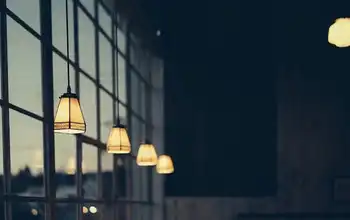TVA energy plan pays off
By Knoxville News Sentinel
Substation Relay Protection Training
Our customized live online or in‑person group training can be delivered to your staff at your location.

- Live Online
- 12 hours Instructor-led
- Group Training Available
The grocery distribution company near Nashville gets paid essentially to unplug its 53,000-square-foot freezer for a couple of hours on short notice during peak hours for power demand.
"They actually give us a payment for how much (electricity) we curtail," said Phillips, facilities manager for the 350-employee Associated Wholesale Grocers Inc.
Similar programs are being tested by utilities nationwide as they try to reduce energy use and the costs of buying extra emergency power from other providers.
TVA, the nation's largest public utility, began testing its "demand response" conservation program last summer with smaller companies. AWG was one of about 20 businesses that participated, totaling about 4 megawatts of short-term reserve capacity.
Pleased with the performance, TVA has expanded the program this year to customers of distributors in Nashville, Memphis, Knoxville and Huntsville, Ala. The initial goal is 50 megawatts of energy reserve, growing to 110 to 125 megawatts in three years - about the output of one combustion unit at a small peak-power plant.
The advantage of demand response is that it delivers extra capacity immediately without having to build a new power plant or creating a new source of pollution.
TVA has hired Boston-based energy supplier EnerNOC Inc. to run the program for an undisclosed amount. EnerNOC manages similar programs for utilities from New England to Florida to California.
TVA executive Joe Hoagland says the program fits with the agency's new energy-efficiency and conservation initiative aimed at saving 1,400 megawatts by 2012 - roughly one new nuclear reactor - while also reducing the $1 billion TVA is spending annually to buy extra power from outside suppliers to meet peak needs.
AWG and other participants were called on six times last year, averaging outages of 5 hours each.
"I think it is an area where there is a lot of low-hanging fruit," Hoagland said of the potential reserves among smaller commercial operators - from grocery stores to office buildings.
The U.S. Department of Energy estimates the nation's demand response potential in 2004 was about 20,500 megawatts, or about 3 percent of U.S. peak demand. But the actual delivered reductions were about 9,000 megawatts, or 1.3 percent of peak demand.
PJM Interconnection, a Pennsylvania-based power grid manager serving utilities in 13 states, has developed a program similar to TVA's that has some 600 megawatts of demand response capacity under contract.
"It is good for everybody," PJM spokesman Ray Dotter said. "All of this just makes sense for economics, for reliability and for the environment."
TVA's program is seeking companies willing to accept outages of up to eight hours at a time on a 30-minute notice, with a total of 40 or 80 hours of outages during the June 1-Sept. 1 program period. Companies will be paid to be on-call and for actual energy savings during outages. A 1-megawatt commitment can earn the participating company $18,000 to $40,000 a year.
"If it is successful, my goal is to make it bigger," Hoagland said. "But we want to make sure that it really works right first."











